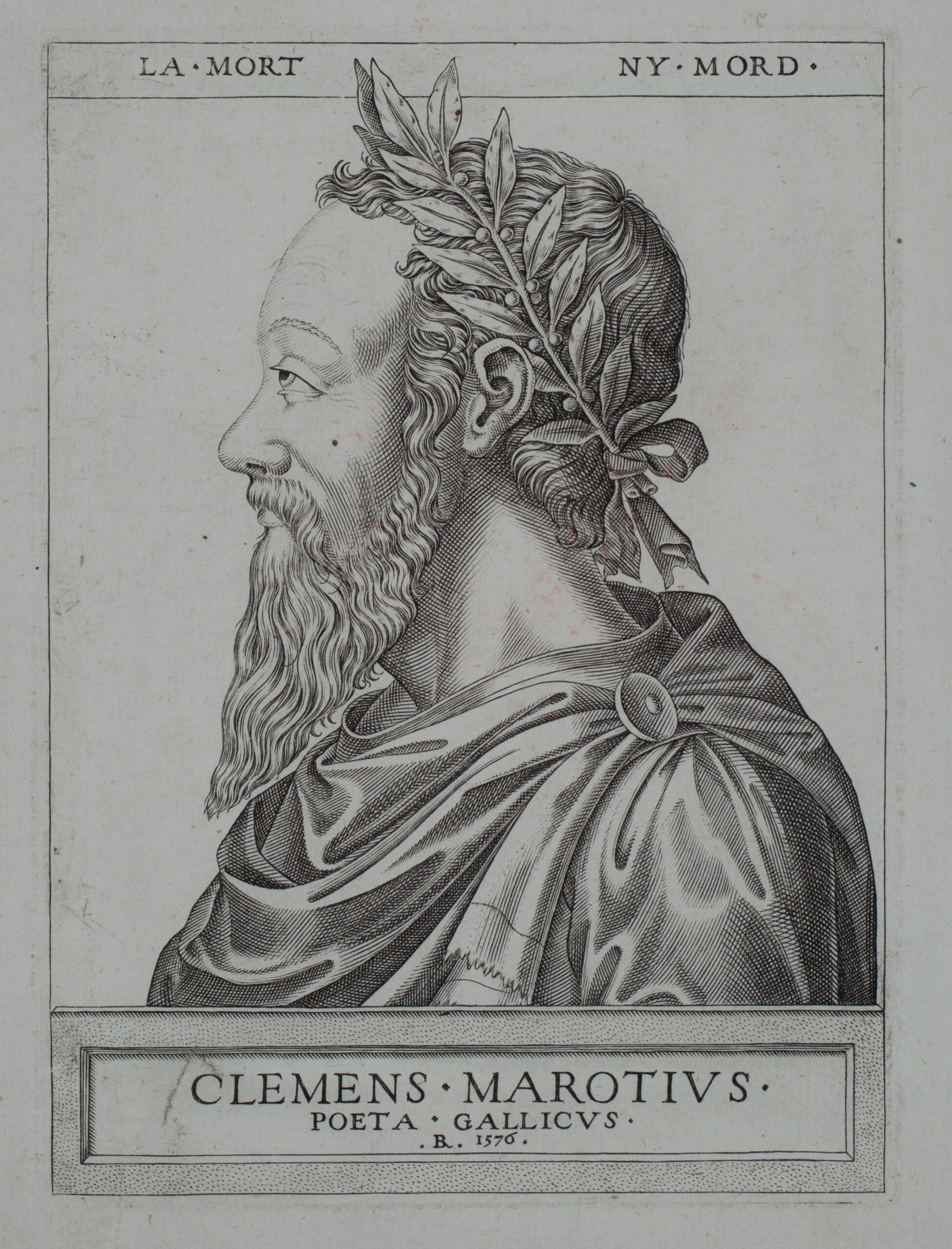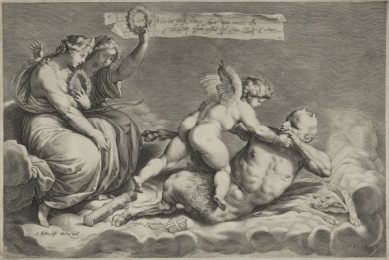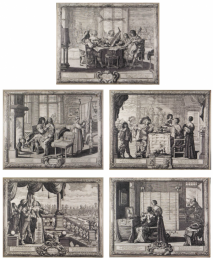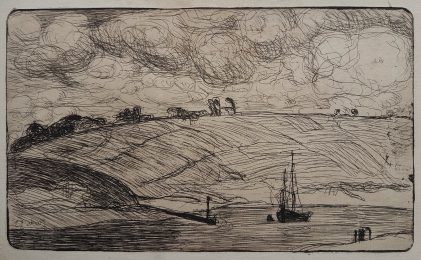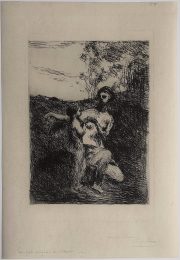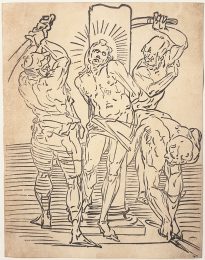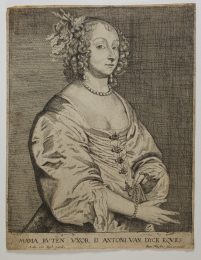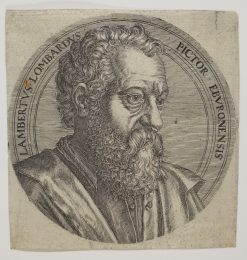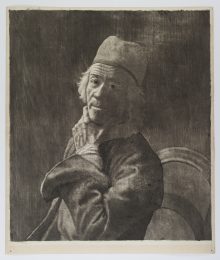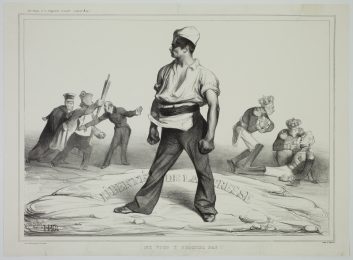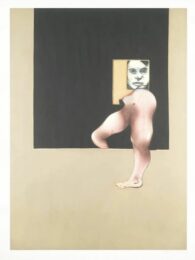Details — Click to read
Engraving, 170 x 124 mm. IFF p. 190 no. B, Robert-Dumesnil 112, Levron 48.
Fine impression printed on laid paper. Wide margins (sheet: 240 x 197 mm). Two tiny tears: 20 mm on the right border of the sheet and 10 mm in the cartouche to the left of the title. Collection mark printed in red on the back of the sheet (collection from Rouen, France; Lugt 5437).
René Boyvin engraved several busts of Clément Marot wearing a crown of laurels. Jacques Levron references four, three of which bear Boyvin’s monogram.
Among Boyvin’s engraved portraits, Jacques Levron distinguishes two main series with numbered plates. The first series: Illustrium philosophorum et poetarum effigies XII – les effigies des douze illustres philosophes par René Boyvin [The effigies of the twelve illustrious philosophers, by René Boyvin], published in 1566, is today exceedingly rare. The second series represents the great reformers: Martin Bücer, Jean Calvin, Jean Huss, Jean de Lespine, Luther, Melanchthon and Zwingli. Regarding this series, Levron explains that “around some date that is of course impossible to determine with precision, Boyvin left the faith in which he was born to embrace the cause of Luther and Calvin. The extent to which the reformed faith found many adepts in certain trades, for example among goldsmiths and jewellers, may not have been sufficiently emphasised. Being in frequent contact with Flemings or Germans who had converted to the new faith, French goldsmiths willingly followed the Reformation. Boyvin joined the movement: he publicly manifested his new beliefs by publishing, around 1566-1570, a series similar to the philosophers’ one, but on the subject of the great reformers of all times.” (Levron, p. 38, our translation). Levron groups the portrait of Clément Marot together with this series, as a “Protestant poet, or a poet suspected of Protestantism.” He also highlights the very unflattering realism of the portrait, giving Marot “a thick nose” and “protruding eyes”. Boyvin nevertheless had deep admiration for the poet: in a different version of the portrait, he describes him as primus sui temporis poeta gallicus: “the foremost French poet of his time” (R.-D. 113).
The style and composition of Clément Marot’s portrait are similar to the reformers’ portraits as well. Jean Calvin’s portrait, for example, has the motto prompte et sincere at the top, while Martin Bücer’s has the motto mihi patria coelum. On Clément Marot’s portrait the following words are engraved: la mort ny mort, the poet’s motto, to be found at the end of the Address to the Reader in L’Adolescence clémentine, Marot’s collection of verse published in 1532.
There are several anonymous copies of this portrait of Clément Marot, one of René Boyvin’s most famous, along with his portrait of Henry II.
References: Alexandre-Pierre-François Robert-Dumesnil: Le peintre-graveur français, vol. 8, 1850; Jacques Levron: René Boyvin, graveur angevin du XVIe siècle : avec le catalogue de son œuvre et la reproduction de 114 estampes, 1941.

